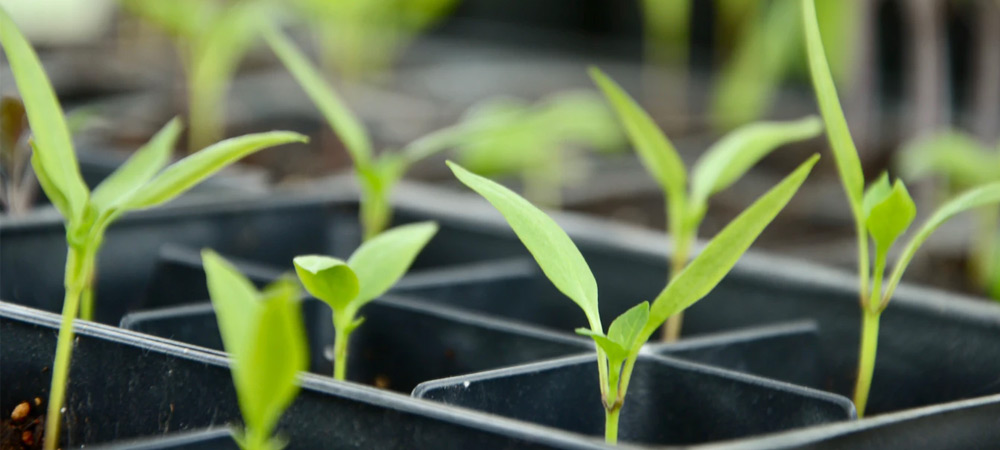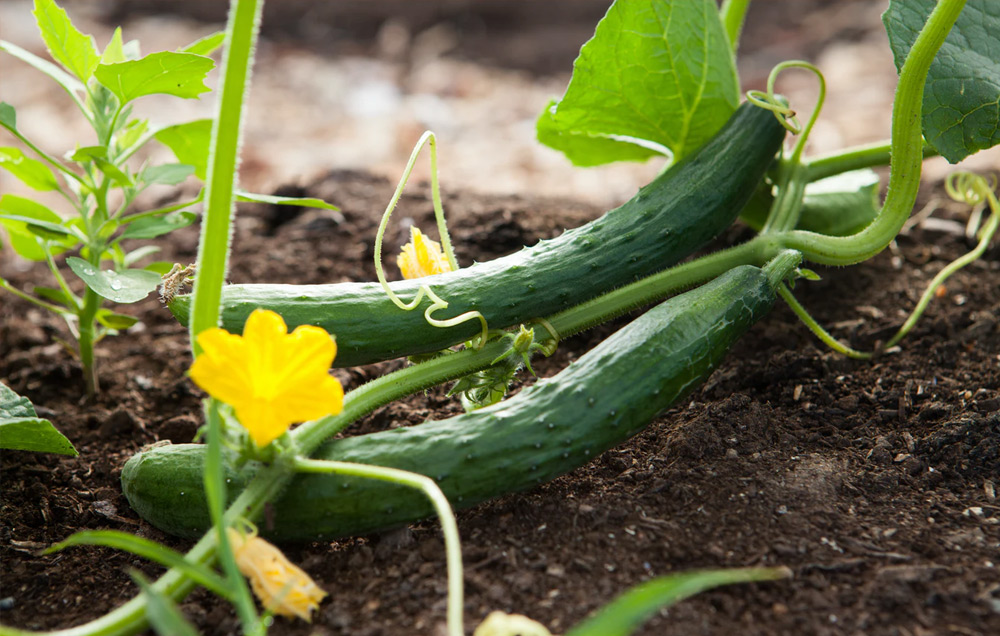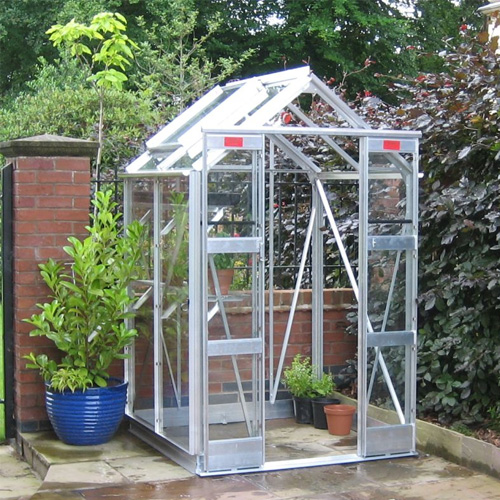What to Grow With a Small Greenhouse Kit

Great greenhouse growing experiences don’t need great big gardens; with a few of the right tips, you can fashion an amazing small greenhouse experience in even very small gardens.
The point of a greenhouse, regardless of size, is to give you more control over the environment in which your plants are growing. This means that you can control airflow to keep the air the correct humidity and to prevent diseases from gripping your prized plants. It means you can keep the temperature higher on colder days, or open things up to let heat out when the sun is out and the day hot. You can add light, heat, nutrients – and lock out many pests. You can even grow upwards using shelving and hanging baskets, or anchor plants directly into the soil in the floor of the greenhouse. Last but not least, you control the water your plants receive, so you don’t have to rely on the rain to keep things moist enough, and you aren’t at the mercy of nature when it comes to torrential rainfall.
All of this means that you can start planting earlier, harvest later, and increase your yields. You can even use the greenhouse as a cosy place to plan and prepare for your next project, or to enjoy that hot mug of tea on a drizzly, overcast day.
So, without further delay, let’s find out what vegetables are best for small greenhouse growing, and how you can best use your small greenhouse to increase your success in gardening.
Why Choose a Small Greenhouse?
The most obvious benefit of greenhouse kits is that you aren’t at the mercy of nature when it comes to controlling your plants’ environment. That means a lot less stress, no more staring in trepidation at a clear sky and a dried-out garden – or at another day of heavy cloud when there are already puddles standing over your precious little plants.
There are some differences in how gardening is done, though, once you move your efforts behind those clear panes. What those differences are depends a lot on what you’re trying to grow, and what size your greenhouse is too.
Greenhouse kits come in almost any size you could imagine. From 6’x8’ to the mini-sized ones, they will fit the space you have, and even the tiny ones can have up to four tiers of shelf space.
Sometimes being able to start the seedlings in a shelter is enough to give your gardening that extra success you’re looking for, but there is more power than that in a small greenhouse.
- You can also propagate plants that need more humidity than your outside space can provide for them. Once they are more mature, they can perhaps do fine outside, but a small greenhouse will give them that added protection they need early on.
- You can also easily move some small greenhouses around, so you can take advantage of difference locations in your garden at different points in the season. Grow cuttings in a more sheltered spot or bring it out into the brightest position for your veg growing.
- Weak or stressed plants may also need a little additional shelter or protection from pests and diseases. A small greenhouse is an excellent choice to increase their chances of success.
Don't have a small greenhouse? You can buy a new one on our website with Free UK Delivery.
Best Vegetables to Grow in a Small Greenhouse
All Year Round
With enough artificial helpers – like heaters and lights – you can grow anything all year round… but for most of us, we just want to extend the seasons enough to give us a few additional choices, and to increase the chances of our favourites having a reliable, abundant yield.
The most commonly grown vegetables in temperate zones include tomatoes, cucumbers, peppers, lettuce, squash, strawberries, cabbages, and aubergines.
Dealing with Colder Temperatures
The best vegetables for back garden greenhouses are cold-hardy plants like leafy greens, chard, cabbage and cauliflowers, and tender plant types, like aubergine, tomatoes, peppers, and cucumbers.

For cold-hardy plants, day temperatures should be kept between 10 and 21 degrees Celsius and night-time temperatures between 7 and 13 degrees Celsius. These can be started in a greenhouse and moved outside quite early in the growing season… or, in some cases, kept in one through the colder winter months.
For tender crop types, the goal of using the greenhouse is to keep daytime temperatures between 15 and 30 degrees Celsius and night-time temperatures between 7 and 18 degrees Celsius. Keeping them indoors until the outdoor temperatures suit these ideal ranges means that you can increase reliability and yield of your crops.
Root systems will be longer and hardier after a head start in the ideal environment of the greenhouse, and that will mean a healthier and more robust plant once it is outside.
Are you a beginner? Learn about the best veggies that are easy to grow here.
Planning Your Growing Season
Longer seasons are great, but the right greenhouse can mean opening up all new possibilities too, including growing in seasons that used to be filled with waiting and longing.
In late winter to early spring, start your pepper, cabbage, leeks, onions, lettuce, cucumber, and tomato seeds in a propagator. These may benefit from a little added artificial heat, too, either to the greenhouse or to the propagator itself.
In mid-spring you can put your tomato and pepper seedlings out into an unheated greenhouse, and they should do fine. Basil seeds can be started indoors around this time too, or you can wait and plant it directly outdoors in the summer. More tender plants, like pumpkins, squashes, and courgettes, can be sowed in a mini greenhouse or cold frame around this time.
In early summer, your tender plants can be transplanted outdoors. Hardening them off first is recommended, and be sure that you keep an eye out for frost warnings too, as a late frost can do severe damage. By this time, your summer greenhouse crops should be moved into the positions they will be in when it comes time to harvest.
In mid-summer (sometimes even as early as late spring) you can harvest your summer vegetables and start planting your green beans, broccoli, and parsley seeds outdoors. This is also the time to remove spent cucumber, melon and green bean crops.
By late summer it’s time to put in those new potatoes (with some artificial heating) so they will be ready for Christmas eating. You can also plant baby carrots, lettuce, and various salad leaves for the late harvest.
Fall is the time to sow your hardier lettuce crops for the spring harvest. You can also put in some green beans, broccoli, and even parsley seeds in a protected environment. It’s a good idea to bring in your potted herbs around this time too; you won’t need to crop them yet, but it will keep them in great shape for when you do want to.
Read next: Best Vegetables to Grow in a Greenhouse
South West Greenhouses stock a wide range of greenhouses for sale online, with Free Delivery across the UK.

 Author:
Author: